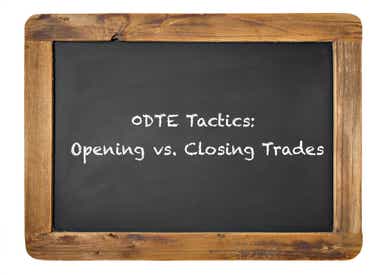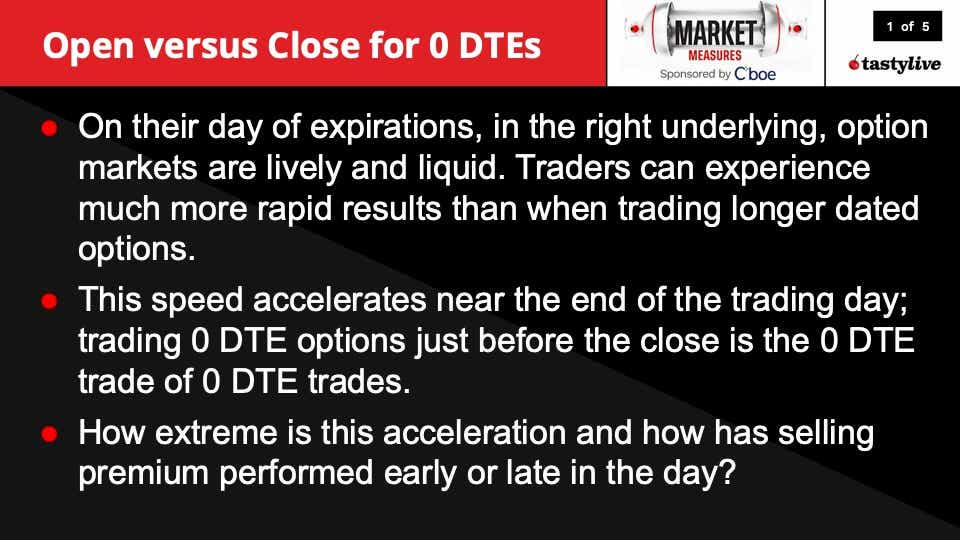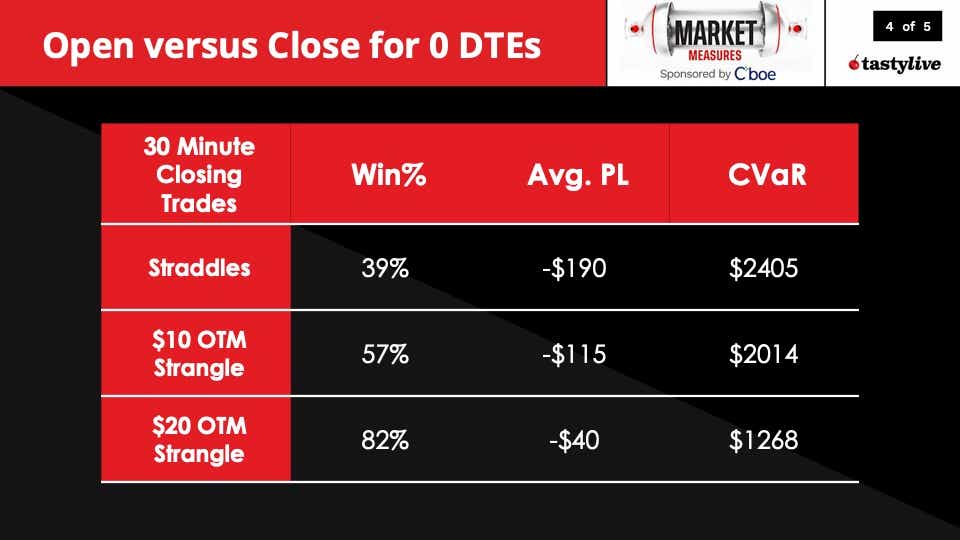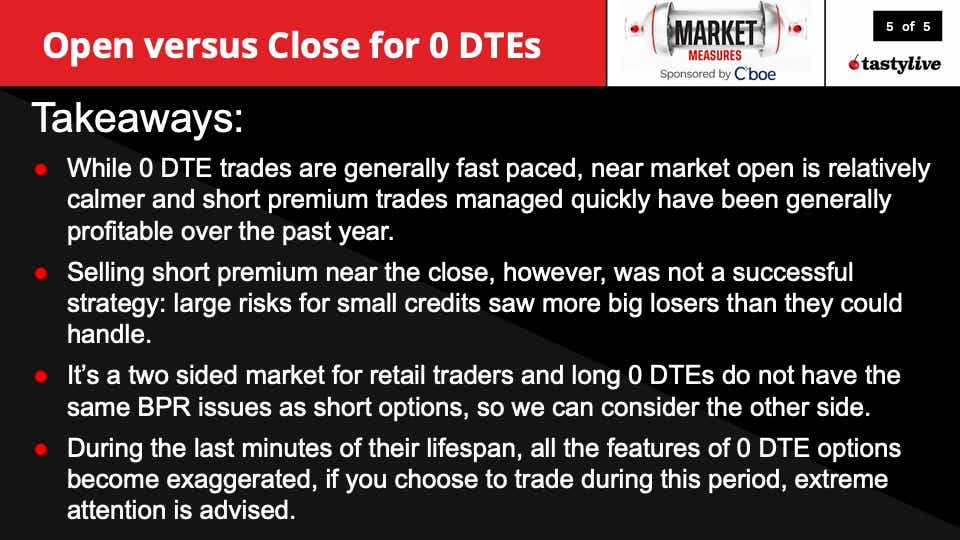0DTE Tactics: Opening vs. Closing Trades

0DTE Tactics: Opening vs. Closing Trades
Tom Sosnoff reveals the "red flag" you need to be on the lookout for to successfully trade zero-DTE options
When you have just hours to execute, the setup and execution of a trading strategy is more vital than usual.
On the May 14 edition of Money Measures on the tastylive network, hosts Tom Sosnoff and Tony Battista discussed a study that examined the first 90 minutes and last 30 minutes of the trading day for traders diving into zero-days-to-expiry (0DTE) options.
View a brief summary of the discussion here and the entire Market Measures segment here.
0DTE options, as the name suggests, are options set to expire by the end of the trading day. That makes 0DTE options the most rapid and dynamic trading instruments in the financial markets. For instance, traders might buy 0DTE options in the morning, allowing them to take advantage of the early trading day's price movements and a more predictable market.

The brief time to expiration gives 0DTE options inherently higher gamma—which means their prices change more dramatically with movements in the underlying asset. This makes the options attractive for short-term strategies but extremely risky if one isn't cautious. The key to mastering 0DTE strategies lies in understanding the optimal times for trading and the potential pitfalls.
First 90 minutes vs. last 30 minutes
Selling 0DTE short strangles at market opening and closing them after 90 minutes generally results in profitable trades, while selling short premium in the last 30 minutes often leads to losses because of market volatility, a tastylive study shows.

"There’s a very important red flag here," Sosnoff said. "Don’t sell zero DT premium with a half hour to go."
The study, spanning 52 weeks, assessed the performance of different trading strategies. Below are takeaways for early morning and late-afternoon trades.
During the early morning, selling $10 out-of-the-money (OTM) strangles had a win rate of 64%, $20 OTM at 65% and $30 OTM at 68%. Also, average profit and loss and conditional value at risk (CVaR), also known as the expected shortfall, were relatively stable, making this a somewhat profitable strategy with controlled risk. CVarR is a risk assessment measure that quantifies an investment portfolio’s tail risk.
In the late afternoon, selling straddles showed a win rate of 40%, $10 OTM had a win rate of 57%a nd $20 OTM outperformed with a win rate of 82%. And, despite the win rates, all strategies resulted in net losses, primarily because of outlier moves that produced significant losses, as evidenced by higher CVaR values.


More on conditional value at risk (CVaR)
While trading 0DTE options, CVaR is particularly useful because of the inherent high risk and potential for large, unexpected spikes in price movement as these options near expiration. Monitoring CVaR helps traders understand and prepare for extreme losses, which is crucial for maintaining a balanced risk-reward profile in such a volatile trading environment.
CVaR provides an estimate of the potential losses in an investment portfolio or position under extreme market conditions. Unlike value at risk (VaR)—which evaluates threshold loss level that is not expected to be exceeded with a given confidence level—CVaR goes further by estimating the average of losses that occur beyond the VaR threshold.
Final thoughts
In summary, trading zero-DTE options requires good timing and a keen understanding of market behavior. Stick to early trades for more stable results, and tread cautiously in the turbulent waters of the closing minutes.

View a brief summary of the discussion here and the entire Market Measures segment here.
Disclaimer: The above content is for informational purposes only and does not constitute trading or investment advice. Trading in financial markets involves substantial risk and may not be suitable for all investors. Always conduct your own due diligence and consult with a licensed financial advisor.
Jacob Perlman is a tastylive mathematician and quantitative researcher.
For live daily programming, market news and commentary, visit tastylive or the YouTube channels tastylive (for options traders), and tastyliveTrending for stocks, futures, forex & macro.
Trade with a better broker, open a tastytrade account today. tastylive, Inc. and tastytrade, Inc. are separate but affiliated companies.
Options involve risk and are not suitable for all investors. Please read Characteristics and Risks of Standardized Options before deciding to invest in options.